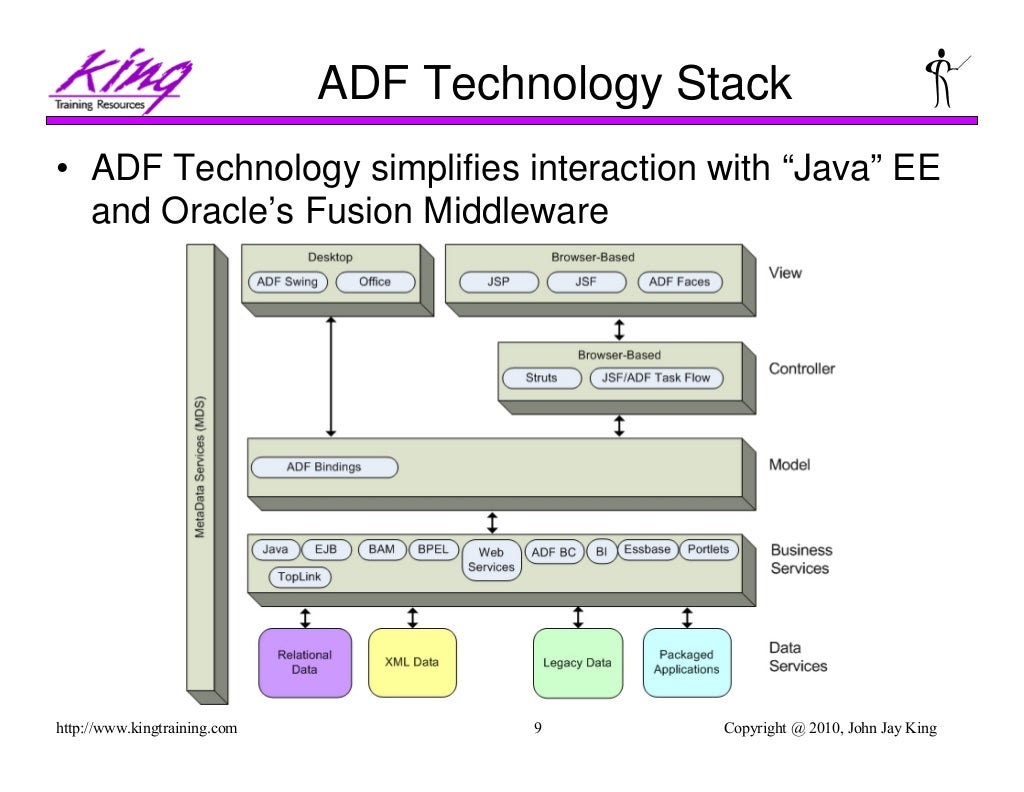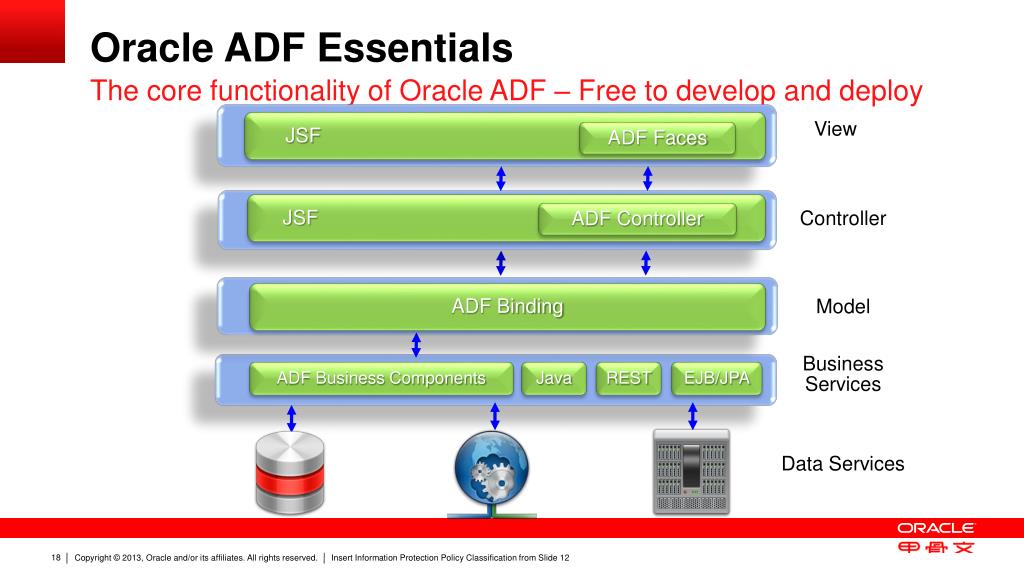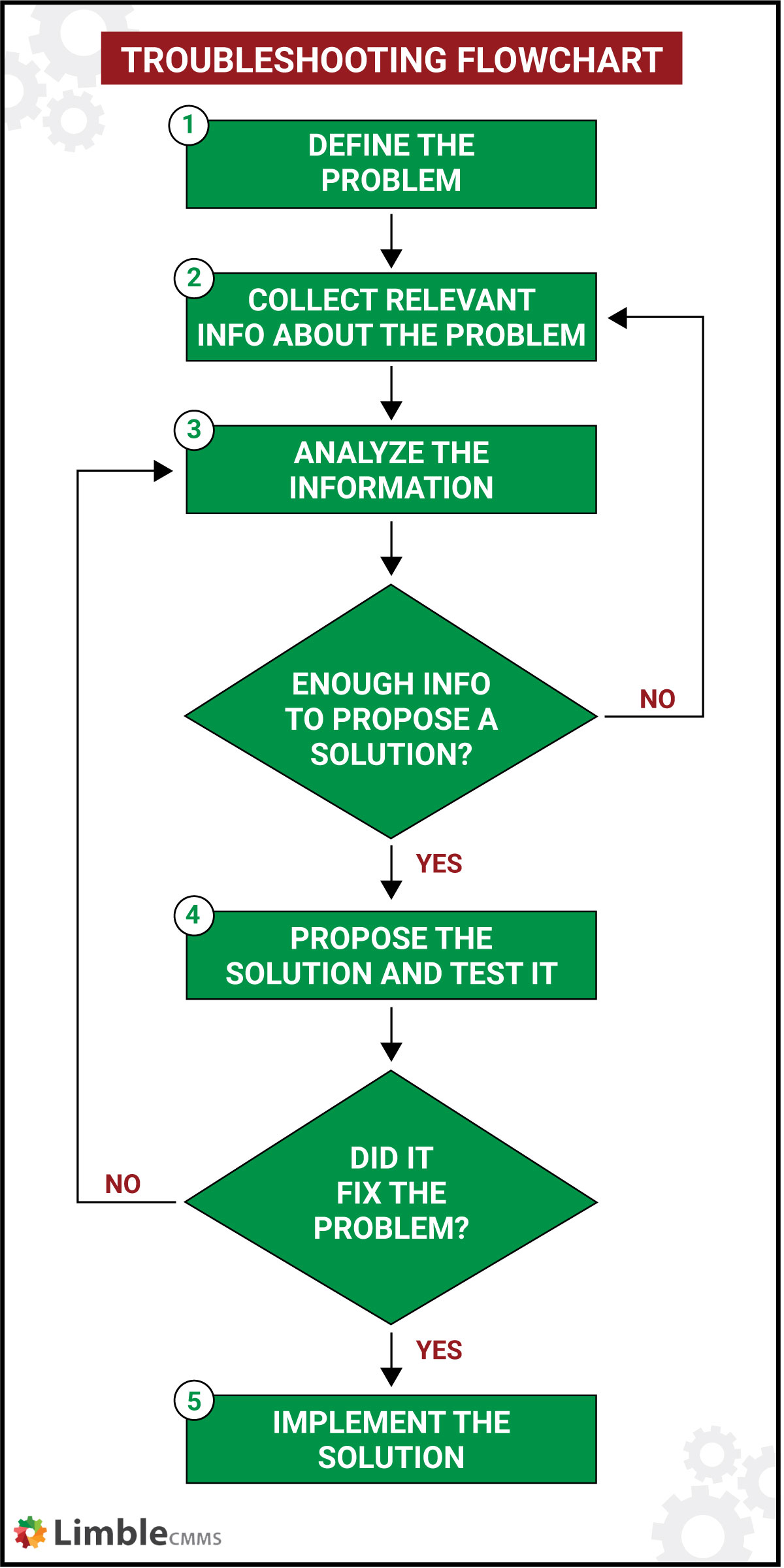What is the ADF Framework?
The ADF (Application Development Framework) framework is a comprehensive and unified development environment created by Oracle Corporation. It is specifically designed for building enterprise applications, offering a rich set of features that simplify and accelerate the development process. The ADF framework is built on top of Java EE (Java Enterprise Edition) and supports the Model-View-Controller (MVC) design pattern. This framework is an excellent choice for developers who want to create scalable, robust, and maintainable applications with minimal effort.
The ADF framework simplifies the development process by providing visual tools, reusable components, and seamless integration with other Oracle products. It enables developers to create applications with a consistent look and feel, adhering to best practices and design principles. By using the ADF framework, developers can focus on the business logic of their applications, rather than worrying about low-level implementation details.
The ADF framework enhances productivity by allowing developers to create applications more quickly and efficiently. It achieves this by providing pre-built components, data binding capabilities, and a visual development environment. These features enable developers to create applications with fewer lines of code, reducing the potential for errors and bugs. Additionally, the ADF framework supports rapid application development (RAD), enabling developers to create functional prototypes in a short amount of time.
Key Features and Benefits of the ADF Framework
The ADF framework offers numerous features and benefits that make it an attractive choice for developers. Some of its most notable advantages include visual development, reusable components, and seamless integration with other Oracle products.
Visual development is one of the standout features of the ADF framework. It allows developers to create applications using a drag-and-drop interface, significantly reducing the amount of code they need to write. By visually designing applications, developers can focus on the overall structure and layout of their applications, rather than getting bogged down in low-level implementation details.
Reusable components are another major benefit of the ADF framework. These components enable developers to create modular and maintainable applications, where individual components can be reused across multiple projects. By leveraging reusable components, developers can save time and reduce the potential for errors and bugs in their applications.
Seamless integration with other Oracle products is another key advantage of the ADF framework. It is designed to work seamlessly with other Oracle products, such as Oracle Database, Oracle WebLogic Server, and Oracle JDeveloper. This integration enables developers to create applications that leverage the full power of the Oracle ecosystem, providing a consistent and cohesive development experience.
The ADF framework also offers a range of other features and benefits, such as data binding, task flows, and page templates. These features enable developers to create applications that are efficient, scalable, and maintainable, making the ADF framework an excellent choice for modern software development.
How to Get Started with the ADF Framework
Getting started with the ADF framework is a straightforward process that involves installing, configuring, and setting up the environment for your projects. Here’s a step-by-step guide to help you get started:
- Check System Requirements: Before installing the ADF framework, ensure that your system meets the minimum requirements. You will need Java Development Kit (JDK) 8 or later, a compatible web browser, and a development environment such as Oracle JDeveloper or Eclipse.
- Install JDeveloper: If you don’t already have JDeveloper installed, download and install the latest version from the Oracle website. JDeveloper is a fully integrated development environment that supports the ADF framework.
- Install the ADF Framework: Once you have JDeveloper installed, you can install the ADF framework by following the instructions provided by Oracle. The installation process typically involves downloading and extracting the ADF framework files, and configuring JDeveloper to use the ADF framework.
- Create a New Project: After installing the ADF framework, you can create a new project in JDeveloper. Choose the “Fusion Web Application” project type, which is specifically designed for the ADF framework.
- Design the Data Model: The ADF framework supports a visual approach to designing the data model. You can use the JDeveloper Data Controls panel to create data bindings, which enable you to easily access and manipulate data in your application.
- Design the User Interface: The ADF framework provides a range of user interface components, such as input fields, buttons, and menus. You can use the JDeveloper visual editor to design the user interface, using drag-and-drop to add components to your pages.
- Implement Navigation: The ADF framework supports a range of navigation mechanisms, such as page flows and task flows. You can use the JDeveloper visual editor to implement navigation in your application.
- Test Your Application: Once you have designed the data model, user interface, and navigation, you can test your application to ensure that it works as expected.
By following these steps, you can quickly and easily get started with the ADF framework. With its visual development tools and reusable components, the ADF framework is an excellent choice for modern software development.
Exploring ADF Framework Components
The ADF framework is composed of various components that work together to simplify the development process and enhance productivity. Here are some of the key components of the ADF framework:
Data Binding
Data binding is a powerful feature of the ADF framework that enables developers to easily connect their applications to data sources. With data binding, developers can create data-driven applications without writing complex SQL queries or managing database connections. Data binding also supports data validation, which ensures that data is consistent and accurate before it is saved to the database.
Task Flows
Task flows are a key component of the ADF framework that enable developers to create modular and reusable application components. Task flows are essentially a series of steps that perform a specific task, such as adding a new record to a database or displaying a list of records. Task flows can be used to create complex application workflows, and they can be reused across multiple applications.
Page Templates
Page templates are another important component of the ADF framework that enable developers to create consistent and standardized application layouts. With page templates, developers can define a common layout for their applications, including headers, footers, and navigation menus. Page templates can be used to create a consistent user experience across multiple pages and applications.
Business Components
Business components are a set of reusable components that enable developers to create complex business logic without writing complex code. Business components include entities, views, and actions, which can be used to create data models, query data, and perform business operations. Business components can be used to create complex application logic, and they can be reused across multiple applications.
UI Components
UI components are the visual elements of the ADF framework that enable developers to create rich and interactive user interfaces. UI components include input fields, buttons, menus, and tables, which can be used to create data-driven applications. UI components can be customized and styled to create a unique user experience, and they can be used to create complex application workflows.
By understanding the various components of the ADF framework, developers can create efficient and effective applications that meet their business needs. The ADF framework provides a rich set of features and components that simplify the development process and enhance productivity, making it an ideal choice for modern software development.
Building a Simple Application with the ADF Framework
Now that you have a basic understanding of the ADF framework and its components, let’s walk through the process of creating a simple application. Here’s a step-by-step guide to building a simple data-driven application using the ADF framework:
Step 1: Create a New Application
To create a new application, open JDeveloper and select “New Application” from the File menu. Choose “Fusion Web Application” as the application type, and click “OK”.
Step 2: Define the Data Model
The next step is to define the data model for your application. In the Application Navigator, right-click on the “Model” project and select “New” > “Business Components” > “Entity Objects”. Define the entity objects that represent the data in your application, and create a view object that encapsulates the query logic.
Step 3: Design the User Interface
Once you have defined the data model, you can design the user interface for your application. In the Application Navigator, right-click on the “ViewController” project and select “New” > “JSF Page”. Design the page layout using the drag-and-drop visual editor, and add data bindings to display the data from your view object.
Step 4: Implement Navigation
To implement navigation in your application, you can use task flows. In the Application Navigator, right-click on the “Model” project and select “New” > “Task Flow”. Define the steps in your task flow, and add control flow rules to specify the navigation logic.
Step 5: Test the Application
Once you have designed the user interface and implemented the navigation, you can test the application. In the Application Navigator, right-click on the project and select “Run”. This will launch the application in a web browser, allowing you to test the functionality and user experience.
By following these steps, you can create a simple data-driven application using the ADF framework. The ADF framework provides a rich set of features and components that simplify the development process and enhance productivity, making it an ideal choice for modern software development.
Best Practices for Using the ADF Framework
To get the most out of the ADF framework and ensure that your applications are efficient, maintainable, and scalable, it’s important to follow best practices. Here are some best practices for using the ADF framework effectively:
Optimize Performance
To optimize the performance of your ADF applications, it’s important to minimize the amount of data that is retrieved from the database, use caching effectively, and minimize the number of round trips between the client and the server. You can also use tools like the ADF Performance Monitor to identify performance bottlenecks and optimize your applications accordingly.
Manage the Application Lifecycle
To manage the application lifecycle effectively, it’s important to use tools like Oracle Enterprise Manager to monitor your applications, diagnose issues, and apply patches and upgrades. You should also follow a regular release cycle and use version control to manage your codebase.
Follow Coding Standards
To ensure that your code is maintainable and easy to understand, it’s important to follow coding standards and best practices. The ADF framework provides a set of coding standards and best practices that you should follow to ensure that your code is consistent, readable, and maintainable.
Use Reusable Components
To maximize productivity and ensure that your applications are consistent and maintainable, it’s important to use reusable components wherever possible. The ADF framework provides a rich set of reusable components that you can use to build your applications, including data bindings, task flows, and page templates.
Test Your Applications Thoroughly
To ensure that your applications are reliable and bug-free, it’s important to test them thoroughly. The ADF framework provides a range of testing tools and frameworks that you can use to test your applications, including unit testing, functional testing, and performance testing.
By following these best practices, you can ensure that your ADF applications are efficient, maintainable, and scalable. The ADF framework provides a rich set of features and components that simplify the development process and enhance productivity, making it an ideal choice for modern software development.
ADF Framework vs. Other Development Frameworks
The ADF framework is just one of many development frameworks available to developers today. Here’s how it compares to other popular development frameworks:
ADF Framework vs. Spring Framework
The Spring Framework is a popular Java framework that provides a wide range of features for building enterprise applications. While both the ADF framework and the Spring Framework are Java-based, the ADF framework is specifically designed for building Oracle-based applications, while the Spring Framework is more general-purpose. The ADF framework provides a rich set of features for building data-driven applications, while the Spring Framework provides a wider range of features for building enterprise applications, including security, transaction management, and messaging.
ADF Framework vs. Ruby on Rails
Ruby on Rails is a popular web application framework that is known for its simplicity and ease of use. While both the ADF framework and Ruby on Rails are designed for building web applications, the ADF framework is more complex and feature-rich, while Ruby on Rails is more lightweight and streamlined. The ADF framework is better suited for building enterprise applications with complex data requirements, while Ruby on Rails is better suited for building simple web applications with minimal data requirements.
ADF Framework vs. AngularJS
AngularJS is a popular JavaScript framework for building single-page applications. While both the ADF framework and AngularJS are designed for building web applications, the ADF framework is a more traditional Java-based framework, while AngularJS is a client-side JavaScript framework. The ADF framework is better suited for building enterprise applications with complex data requirements, while AngularJS is better suited for building dynamic, interactive user interfaces for web applications.
When choosing a development framework, it’s important to consider the specific needs of your project, as well as your team’s expertise and experience. The ADF framework is an excellent choice for building enterprise applications with complex data requirements, particularly in the Oracle ecosystem. However, other frameworks like Spring Framework, Ruby on Rails, or AngularJS may be better suited for other types of projects or teams.
Troubleshooting Common Issues in the ADF Framework
While the ADF framework is a powerful and feature-rich development framework, it can sometimes be challenging to work with. Here are some common issues that developers face when working with the ADF framework, along with solutions to overcome these obstacles:
Issue 1: Slow Application Performance
One common issue that developers face when working with the ADF framework is slow application performance. This can be caused by a variety of factors, including large data sets, inefficient queries, and poorly optimized code. To improve application performance, it’s important to optimize queries, minimize data transfers, and use caching effectively. You can also use tools like the ADF Performance Monitor to identify performance bottlenecks and optimize your application accordingly.
Issue 2: Complex Data Binding
Another common issue that developers face when working with the ADF framework is complex data binding. Data binding is a powerful feature of the ADF framework, but it can sometimes be challenging to work with, particularly when dealing with large data sets or complex data relationships. To simplify data binding, it’s important to break down complex data relationships into smaller, more manageable components. You can also use tools like the ADF Data Control Palette to visualize data relationships and simplify data binding.
Issue 3: Limited Customization Options
Some developers find that the ADF framework has limited customization options, particularly when it comes to user interfaces. While the ADF framework provides a rich set of pre-built components, it can sometimes be challenging to customize these components to meet specific requirements. To overcome this obstacle, it’s important to leverage custom skinning and theming options, as well as custom component development. You can also use tools like JDeveloper to create custom components and skins.
Issue 4: Steep Learning Curve
Finally, some developers find that the ADF framework has a steep learning curve, particularly for those who are new to the Oracle ecosystem. To overcome this obstacle, it’s important to leverage training resources, such as online tutorials, documentation, and community forums. You can also attend Oracle events and conferences to network with other ADF developers and learn from their experiences.
By understanding these common issues and how to overcome them, you can become a more effective ADF developer and build high-quality, enterprise-grade applications with the ADF framework.






